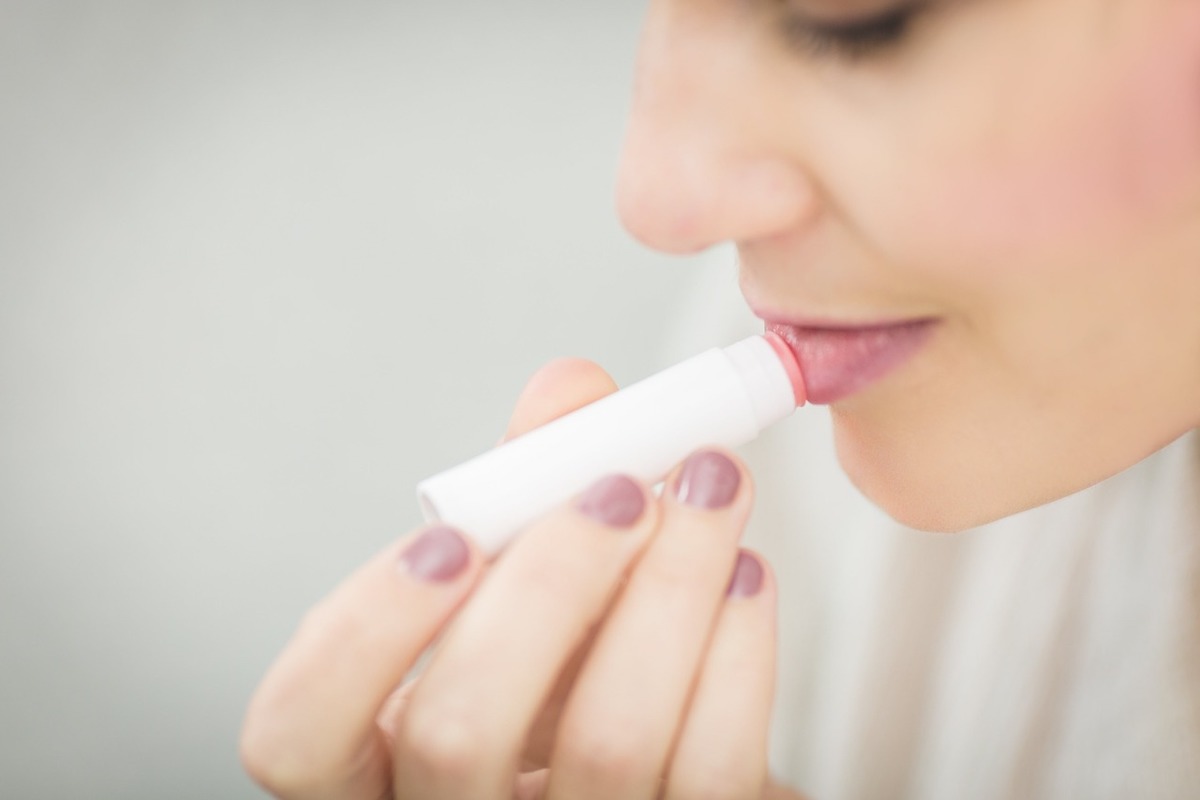One of the common ways to protect your lips is to apply lip balm, and when it comes to lip balm, many of us would think of Chapstick by default. However, we do not use lip balm all the time, so naturally, we may think about the longevity of lip balms. So, does Chapstick expire?
Generally, Chapsticks do not expire, although they advised the stick to be used within a year. If you do not see the expiry date on their products, then it does not expire. You may prolong the freshness of Chapstick lip balms by keeping them between 68°F to 77°F (20°C to 25°C).
This article discusses if Chapstick lip balm has an expiry date. Aside from that, it will also discuss how you can check if your Chapstick lip balms are still ok to use and what happens if you use expired Chapstick lip balms.
The article will also answer some common questions you might have about Chapstick lip balms, such as if it is better than Vaseline.
What Is Chapstick?
ChapStick is a lip balm brand that is popular in many countries across the world. The name comes from the fact that it is supposed to help treat and prevent chapped lips. Sunscreen is also included in several kinds to avoid sunburn.
Lip balms are generally balms created to be applied on lips to protect them from cold and dry weather. People living in seasonal areas tend to use lip balms much more, especially during winter, as lips may become dry and break.
Chapstick began in the 1880s when Charles Browne Fleet invented the balm. The original product resembles a wickless candle wrapped in tin foil and was sold locally in Lynchburg, Virginia. Unfortunately, it did not have much success.
It took John Morton, who purchased the product’s rights in 1912 for $5, to make it work. His wife melted the pink ChapStick mixture, cooled it, and cut it into sticks. The company grew and eventually exchanged hands several times until its current ownership today by GlaxoSmithKline.
Because of its success, the name Chapstick has become a genericized trademark. This is similar to how the brand Pampers has replaced its generic term, diapers. It now refers to any lip balm that comes in a lipstick-style tube and is applied the same way as lipstick.
However, the phrase is still a registered trademark, with GlaxoSmithKline owning all rights.
Carmex and Blistex, its primary competitors in the United States, also employ the iconic lipstick-style tube for their lip balm products. Some other competitors include Vaseline and Burt’s Bees.
You may like this article: Does Gum Expire?
Does Chapstick Expire?
Chapstick advises that the lip balm has no expiry date if you do not see expiry dates on their products. However, it is generally accepted that the longer the lip balms go unused, they may be less fresh. Keeping the balm at room temperature, between 68°F and 77°F (20°C and 25°C), may extend its freshness.
Chapstick’s lip balm formula has multiple variations. Some are natural, while some contain preservatives. As a result, some chapstick may expire or degrade sooner than others.
When checking with Chapstick’s official website, Chapstick advises that all their sticks are best used within the year of manufacture for maximum freshness. However, some chapsticks may be used longer.
Some Chapsticks do not contain expiry dates. Chapstick advises that these lip balms do not expire, although the longer they go unused, the less fresh they are. This means using an old Chapstick may still work, but you may be left with a less pleasant taste in your mouth.
If your Chapstick contains an expiry date, then you should discard it once it crosses the expiry date. There is very little points in exposing yourself to health hazards by using an expired lip balm just because you want to save some money.
We do not know why some Chapsticks have expiry dates and some don’t. Still, perhaps the lip balms with expiry dates contain ingredients that may degrade to the point it becomes a health hazard, which means they should no longer be used.
What Ingredients Are In A Chapstick?
A regular Chapstick is made using the following ingredients:
- Arachidyl propionate,
- Camphor
- Carnauba wax
- Cetyl alcohol
- Colorings
- Fragrances
- Isopropyl lanolate
- Isopropyl myristate
- Lanolin
- Light mineral oil
- Methylparaben
- Octyldodecanol
- Oleyl alcohol
- Paraffin
- Phenyl trimethicone
- Propylparaben
- Titanium dioxide
- White wax
- Propanol
Chapstick contains many flavors and variations, which means the ingredients may be changed with additions and subtractions.
Beginning in 2018, Chapstick has transitioned to producing lip balms free from parabens. This is after scientific studies have confirmed that parabens may affect our health, particularly in producing hormones and increasing cancer risk.
Chapstick is also transparent about the presence of allergens in the products and production facilities. Chapsticks are free of aspartame, fish and pork derivatives, lactose, gluten grains such as rye, barley or wheat, sulfites, and yeast.
However, some chapsticks contain ingredients from tree nuts, peanuts, sesame seeds, and/or sunflower seeds. If you are allergic to these, it may be wise to check with Chapstick before purchasing any of their products.
According to Chapstick’s official website, the manufacturing of Chapstick begins with heating the ingredients in a giant blender. The blender mixed the ingredients to achieve a balanced and even mix.
Colors and flavors are added before the mixture is mixed and then poured into containers to cool. Most of the process is mechanical and done with high standards of hygiene.
Does Chapstick Make My Lips Chapped?
Chapstick lip balms may make your lips chapped if you do not use them correctly. However, all lip balms have the potential to chap your lips, not just Chapstick. The key is to use lip balms correctly and not overuse them.
Sure, lip balms are made to protect your lips, but like many things in life, overuse or misuse can easily cause intended consequences. In the case of lip balm, instead of moisturizing it, you end up chafing your lips.
This is because aside from having moisturizing ingredients, it also surprisingly comes with ingredients that make your lips drier. For example, phenol, menthol, camphor, and salicylic acid.
When looking into the list of ingredients for Chapstick, it does contain camphor, which may dry your lips if used frequently. This means Chapstick does have the potential to dry and chafe your lips if used incorrectly.
Frequently applying lip balms may also cause your lips to stop hydrating themselves. This effect is similar to how frequent anabolic steroid use may trigger the body to stop producing natural testosterone.
Additional things that may cause your lips to chafe include the fragrance and scents added to your Chapstick. This may just be your lip’s incompatibility with the fragrance and scents, which means you may want to consider trying other flavors of Chapstick to see if your lips feel better.
Dermatologist Dr. Melissa Piliang M.D suggests using moisturizers with the least ingredients to reduce the risk of your lip balm causing drying and chaff. For example, you can consider petroleum-based jelly such as Vaseline.
You may like this article: Does Shampoo Expire?
Is Vaseline Better Than Chapstick?
Vaseline may be better than Chapstick because it has few ingredients, which means you are less likely to introduce irritants to your lips. It is also odorless and tasteless, which may help avoid lip balm dependency.
Lip balms such as Vaseline or Chapstick are similar in their ways of working. They are a form of occlusive moisturizer, a type of moisturizer that holds on to moisture. Another type of moisturizer would be humectants, which pull in moisture from its surrounding.
Vaseline and Chapstick work by creating a seal to keep moisture in the lips instead of the moisture being absorbed by the dry air. This keeps the lips moisturized, supple, and free from chaffing.
The difference between the two would be in the ingredients added to the product. In the case of Chapstick, it has many variations, flavors, and scents.
The upside is that you get a more enjoyable experience with Chapstick. You might just feel better smelling the fragrances and maybe occasionally take a cheeky lick at your own lips to taste the balm.
However, These additional flavors, scents, and fragrances may introduce irritants that may hurt your lips. Some Chapsticks do have allergens, which means you risk causing an allergic reaction to your lips, causing them to swell and maybe chaff.
Aside from that, the taste of the lip balm may cause you to develop a dependency on the product. You may frequently want to take a lick to taste the lip balms, similar to how people can be addicted to the taste of coffee.
As a result, you may overapply your Chapstick. Your lips may be exposed to too many drying agents such as camphor or salicylic acid. As a result, they become irritated and may start to chaff.
To counter this, perhaps the best option is to apply a thin layer of Vaseline instead, as recommended by Dr. Ife J. Rodney of Eternal Dermatology + Aesthetics in Columbia, Maryland.
Since Vaseline has minimal ingredients, odorless and tasteless, you have a lesser risk of irritation and developing dependency.
 Being Human
Being Human




